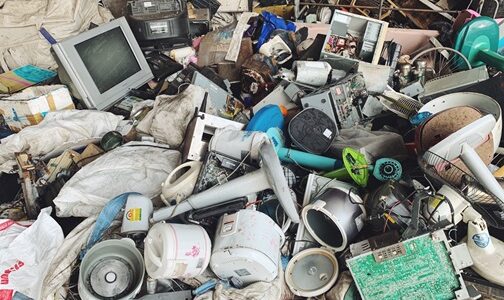Hey fellow Earth defenders and digital natives! It’s me, your eco-conscious comrade in the quest for a greener planet. Today, I’m diving into the electrifying world of ewaste disposal – a journey that began with, believe it or not, a hilariously tragic smartphone incident.
So, there I was, a typical Singaporean teen, glued to my phone 24/7 until one fateful day, my beloved gadget decided to take a dive – right into the pool. Post-panic and a failed rice rescue mission, I was hit with a stark realization. Amidst my mourning for lost data and missed Instagram updates, the question popped up: “What do I do with my now-useless electronic buddy?” This led me down the rabbit hole of e-waste disposal and awakened my inner eco-warrior. If my clumsy mishap can lead to an eco-epiphany, imagine what we can all achieve together!
The E-Waste Epidemic
Let’s face it; we’re all guilty of hoarding outdated gadgets. From obsolete smartphones to ancient laptops, our homes are becoming mini museums of technology past. But here’s the shocking part – improperly disposed e-waste contributes significantly to pollution, harming both our health and the environment. As teens, we’re not just digital natives; we’re future leaders. It’s time we tackle this e-waste epidemic head-on.
Embark on Your Eco Journey
Embracing responsible e-waste disposal isn’t just about being eco-conscious; it’s about being a trendsetter for a sustainable future. Here are some personal tips and tricks to kickstart your digital decluttering mission:
1. Audit Your Gadgets
Start by rounding up all your electronic devices and accessories. Yes, even that first-gen iPod collecting dust in your drawer. Assess what’s functional, what can be donated, and what needs to be recycled. Creating an inventory helps visualize the extent of your digital footprint.
2. Seek Out E-Waste Recycling Points
Singapore is bustling with e-waste recycling points, from community centers to retail outlets. Do a little research to find the nearest drop-off point. Companies like Advance Recycling Pte. Ltd offer convenient options for e-waste disposal. Remember, every recycled device makes a difference.
3. Host a Tech Swap or Donation Drive
Why not turn e-waste disposal into a social event? Organize a tech swap among friends or a donation drive at school. Not only does this extend the life of electronic devices, but it also fosters a community spirit of sustainability. Plus, it’s a fun way to declutter and discover new gadgets.
4. Advocate for E-Waste Awareness
Spread the word! Use your social media prowess to educate others about the importance of e-waste disposal. Share informative posts, create engaging content, or even start a digital declutter challenge. Your voice can inspire a ripple effect of eco-conscious actions.
The Bigger Picture
Embarking on this eco-conscious journey has transformed my perspective on technology and its environmental impact. By adopting responsible e-waste disposal practices, we’re not just decluttering our digital lives; we’re contributing to a larger movement towards sustainability. It’s about making mindful choices that benefit both the planet and future generations.
Conclusion: Your Call to Action
My dive into the pool (literally) led to a dive into environmental activism. Now, I challenge you, my fellow teens, to join me in this quest. Let’s turn our e-waste woes into eco-wins. Together, we can make responsible e-waste disposal the norm and pave the way for a cleaner, greener Singapore. So, are you ready to declutter, recycle, and revolutionize our digital habits? Let’s do this!
